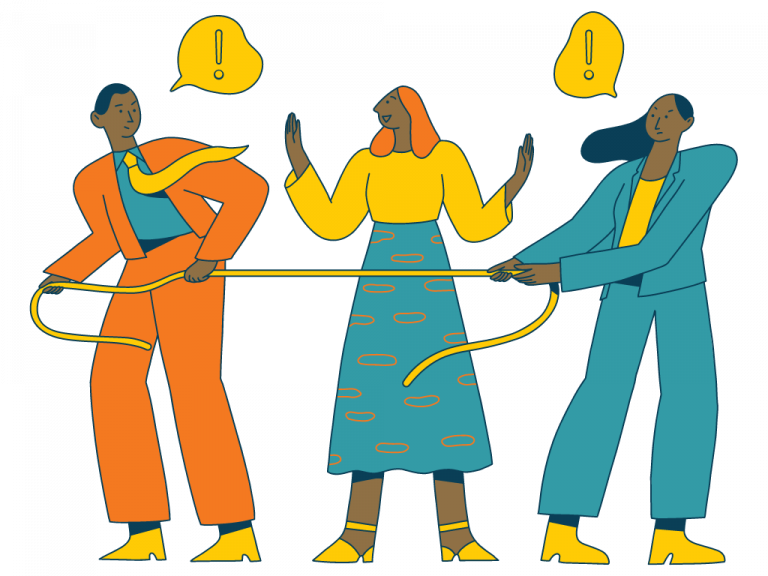
OR
Opinion
Dialogue, Monologue, and Soliloquy as Tools for Conflict Resolution
Published On: December 8, 2023 08:45 AM NPT By: Rajendra Bahadur Singh

Communication is the lifeblood of human interaction, serving as the conduit through which ideas, emotions, and conflicts flow. In the intricate web of interpersonal relationships, the mechanisms of dialogue, monologue, and soliloquy play pivotal roles in navigating and resolving conflicts. These linguistic devices, often employed in literature and drama, offer valuable insights into the dynamics of human connections and provide profound means of conflict resolution.
The dance of dialogue
At the heart of effective communication lies the art of dialogue – a collaborative exchange of ideas, thoughts, and feelings between two or more individuals. Dialogue, when approached with openness and a genuine desire to understand, becomes a potent instrument for conflict resolution. In an interconnected world, the ability to engage in meaningful conversations becomes indispensable.
The essence of dialogue lies in active listening, empathy, and the willingness to consider alternative perspectives. Through the exchange of words, conflicting parties can find common ground, dispel misunderstandings, and forge connections that transcend differences. Dialogue serves as a bridge, fostering understanding and cooperation, and its significance extends beyond mere verbal communication, encompassing the nuances of body language and non-verbal cues.
The power of monologue
While dialogue thrives on mutual exchange, the monologue holds its own unique strength in the realm of conflict resolution. A monologue allows an individual to express their thoughts and emotions freely, offering an unfiltered glimpse into their inner world. In the context of conflict, a well-articulated monologue can serve as a cathartic release, enabling one to process emotions and gain clarity on their own perspectives.
Monologues, whether spoken or written, provide an opportunity for introspection and self-discovery. By articulating their feelings and concerns, individuals can better understand their own motivations and aspirations. This heightened self-awareness can be a catalyst for personal growth and, consequently, contribute to resolving conflicts within oneself with a more grounded and enlightened approach.
The solitude of soliloquy
Beyond the interpersonal realm lies the solitary domain of soliloquy, a dramatic device often found in literature and theater. Soliloquies involve an individual speaking their innermost thoughts aloud, often in solitude. While seemingly disconnected from the immediacy of conflict resolution, soliloquies offer a unique perspective on the internal conflicts that individuals grapple with.
In the solitude of soliloquy, people confront their deepest fears, desires, and dilemmas. This introspective journey can pave the way for self-realization and a profound understanding of one's own role in conflicts. By shedding light on the internal struggles of an individual, soliloquies contribute to the narrative richness and complexity of a story, offering dialogue facilitators and/or counterparts insights into the intricate nature of human psychology.
Interconnection: Weaving the threads together
In the tapestry of human interaction, the interplay of dialogue, monologue, and soliloquy creates a dynamic and multifaceted landscape. When these devices are skillfully interwoven, they can lead to powerful conflict resolution, transcending the limitations of verbal sparring and delving into the deeper layers of human experience.
Effective communication involves not only expressing one's own thoughts but also actively engaging with the perspectives of others. Dialogue becomes a harmonious dance, where individuals navigate the intricate steps of understanding and compromise. Through dialogue, conflicts can be unraveled, dismantled, and replaced with collaborative solutions that honor the diversity of opinions and experiences.
On the other hand, monologue and soliloquy offer avenues for individual introspection. As conflicts arise, the ability to articulate one's thoughts in a monologue provides a valuable opportunity for self-reflection. This self-awareness can be a powerful catalyst for personal growth, equipping individuals with the emotional intelligence needed to engage in constructive dialogue.
Soliloquies, although a departure from direct interpersonal communication, contribute to the broader understanding of conflict resolution by illuminating the internal landscapes of individuals. The solitude of soliloquy offers a glimpse into the universal struggles that shape human behavior, fostering empathy and compassion among audiences.
Real-world application
The principles of dialogue, monologue, and soliloquy are not confined to the realms of literature and drama; they have practical applications in real-world conflict resolution. In interpersonal relationships, be they familial, professional, or societal, the ability to engage in open dialogue, articulate personal monologues, and reflect in solitude can pave the way for sustainable resolutions.
Workplaces benefit immensely from fostering a culture of open communication, where dialogue becomes a means of addressing conflicts and fostering collaboration. Similarly, individuals navigating familial disputes or societal tensions can draw upon the principles of monologue and soliloquy to gain clarity on their own perspectives and contribute to the resolution of larger conflicts.
To sum up all this, in the intricate dance of human connection, dialogue, monologue, and soliloquy emerge as indispensable devices for conflict resolution. Whether on the pages of literature, the stages of theater, or the arenas of real-world interactions, these linguistic tools shape the narrative of conflicts and resolutions. By recognizing the interconnectedness of these devices, we unveil a comprehensive approach to understanding and resolving conflicts, fostering a world where the threads of communication weave a tapestry of understanding, empathy, and harmony.
You May Like This

Click by click
Mia Tuladhar feels that photography has made her more adventurous and bettered her communication skills. She mentions that she started... Read More...

With no means of communication, Gaumukhi cut off from the rest of the country
PYUTAHAN, July 6" Though the human civilization and technological advancement has taken a new leap, locals living in many wards of... Read More...

Gulmi people hit as landslide blocks road, interrupts power, communication
GULMI, July 22: The vehicular movement has been halted along the Chorkote-Shantipur road section after the landslide blocked the road... Read More...











Just In
- Nepal at high risk of Chandipura virus
- Japanese envoy calls on Minister Bhattarai, discusses further enhancing exchange through education between Japan and Nepal
- Heavy rainfall likely in Bagmati and Sudurpaschim provinces
- Bangladesh protest leaders taken from hospital by police
- Challenges Confronting the New Coalition
- NRB introduces cautiously flexible measures to address ongoing slowdown in various economic sectors
- Forced Covid-19 cremations: is it too late for redemption?
- NRB to provide collateral-free loans to foreign employment seekers








Leave A Comment